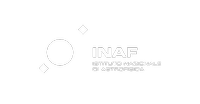CORNO GRANDE - COnstRaiNing the Origin of Galactic cosmic RAys using gamma-ray and Neutrino Diffuse Emissions
Abstract: While cosmic rays (CRs) were discovered more than a century ago, their sources have not been firmly identified yet. It is commonly believed that CRs below PeV energy have a Galactic origin. However, we struggle to find Galactic sources able to accelerate CR up to PeV energy. The standard candidates, supernova remnants (SNRs), do not seem to reach such high energies, suggesting the need for an alternative source class. A key factor in addressing this question is the observation of other messengers, such as gamma rays and neutrinos. These particles, produced by CR interactions with the interstellar medium, carry valuable information about the locations of sources, and the propagation of CRs around sources and through the Galaxy. The LHAASO detector recently reported the observation of ultra-high-energy (UHE) gamma rays from various sources, including the Cygnus cocoon, providing a first experimental proof that star clusters (SCs) might be PeVatrons. Additionally, observations suggest that the regions around some of these sources exhibit a reduced diffusion coefficient, likely due to high levels of magnetic turbulence. With LHAASO unveiling the UHE gamma-ray sky, it is timely and crucial to use these observations to identify the sources of CRs. In the first work package (WP) of CORNO GRANDE, we will investigate how different scenarios for CR transport around sources affect the capability of LHAASO to resolve PeV sources. In the second WP, we will explore SCs as potential PeVatrons. In particular, we will use a semi-analytical model to describe CR propagation from SCs and SNRs. By computing the CR flux at Earth and comparing it with local measurements, we will constrain the magnetic turbulence around sources. In the last WP, we will constrain the number of PeV SCs in our population using the LHAASO catalog. Finally, we will calculate the gamma-ray and neutrino diffuse emission produced by our population and compare it with recent measurements by LHAASO and IceCube.
 CORNO GRANDE has received funding from the European Union's Horizon Europe research and innovation programme under grant agreement No 101208655.
CORNO GRANDE has received funding from the European Union's Horizon Europe research and innovation programme under grant agreement No 101208655.
Struttura INAF: Osservatorio Astrofisico di Arcetri
PI INAF: Vittoria Vecchiotti
Bando: HORIZON-MSCA-2024-PF-01
Riferimento contratto n. 101208655
Inizio: 01/09/2025
Durata: 24 mesi
Coordinamento: INAF
Partner:
SHANGHAI JIAO TONG UNIVERSITY

